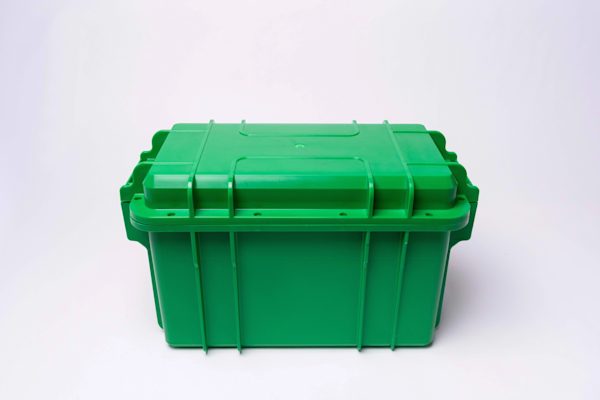The future is here, and it's taking shape with 4D printing. This emerging technology, also known as shape-morphing systems, adds the dimension of time to 3D printing. By employing responsive materials that react to external elements like heat, light, moisture, electric current, or pressure, 4D printed objects can undergo changes in shape or properties. Imagine a smart textile that adjusts its breathability based on humidity or a plumbing system that expands or contracts in response to temperature fluctuations. While 4D printing is still in its infancy, it's easy to envision the huge impact it could have on various sectors. To gain a better understanding of its potential, we consulted with a range of experts in the additive manufacturing industry. Here's what they had to say about shape-morphing systems and the industries this technology could potentially transform.
Healthcare
Conventional implants often face limitations due to their rigid structures. This is where 4D printing can make a difference. With shape-morphing abilities, these implants can potentially adapt to a patient's body over time. For instance, doctors could print dental implants that expand and contract to create the perfect fit for a patient's jawbone.
Robert Jones, a manufacturing engineer at Nissha Medical Technologies, is confident that the advantages of 4D printing will extend beyond implants, "This technology can be used for controlling the release of a drug in the body with extreme precision,” says Jones. “The impact that this will have on medicine will be monumental." As outlined in this research paper, scientists are already developing 4D printed hydrogels designed for stimuli-responsive and targeted drug delivery. These hydrogels can react to changes in a patient's vitals such as body temperature, pH levels, blood pressure, or the presence of specific enzymes, and release medications when and where they're needed. This technology may prove to be a lifesaver for heart patients who require timely access to medicine.
Aerospace
The aerospace industry stands to benefit greatly from 4D printing technologies. Shape-morphing components can enable aircraft to adapt to various flight conditions, reduce air drag, and enhance performance and fuel efficiency. As highlighted by Concordia University research, 4D printed drone wings, which bend up to 20 degrees in response to stimuli, can significantly improve efficiency. Beyond that, 4D printed materials can help develop lightweight, flexible structures for satellites and spacecraft, ultimately lowering the costs and complexity associated with space missions.
Adrian Nordtomme, Director of APAPTA LTD, says that the benefits of 4D printing won’t be confined to aerospace, but will also impact other transportation industries. "I believe 4D printing could be particularly intriguing in applications where an electric current is applied to the object, instead of heat or light,” says Nordtomme “This is especially relevant for the automotive, aerospace, and maritime industries, where there's a keen interest in manipulating structures for aerodynamic purposes."
Apparel
Shape-morphing systems would allow designers to craft clothing and accessories that adapt to both environmental factors and the wearer's preferences. Several researchers and brands including Adidas are currently exploring the development of 4D printed shoes. Designed to adapt to users' unique foot shape and movement patterns, these shoes will offer a superior fit, cushioning, insulation, and breathability. The potential benefits of this technology could provide a competitive edge to athletes.
Resident 3D printing expert at Protolabs Network, Robin Brockötter, highlights how 4D printed textiles will push the boundaries of design and functionality in the fashion industry. He explains, "Imagine a coat that adapts to the cold by becoming thicker or hiking gear that increases its breathability when exposed to sweat. Similarly, a 4D printed dress could dynamically alter its texture or form based on the wearer's movements, resulting in a fluid, ever-changing design."
Furniture
4D printing presents the possibility of self-assembling furniture. Instead of spending hours following the instructions and fumbling with tools, consumers can watch as their new piece of furniture takes shape on its own. This simplified assembly process not only saves time and effort but also makes household goods more accessible. To better grasp this concept, take a look at the following video of a self-assembling cube from MIT.
Francesco Rivalta, Mechanical Engineer at Protolabs Network, thinks shape-morphing systems can transform the furniture industry. "This could be the next big thing after the concept of flat-pack furniture. Imagine assembling a chair by using nothing but heat from a hair dryer."
Packaging
Using 4D printing tech, it is possible to develop packaging capable of protecting the contents from external elements such as rain, extreme cold, or heat. Additionally, this technology can automate the packaging process by enabling it to adapt to external factors.
Drawing from his experience in manufacturing at Nissha Medical Technologies, Jones concurs. He explains, "It could be possible to make a type of packaging material that is stored in flat sheets, but when a product is placed on it and exposed to either light, heat, or some other stimuli, it would self-wrap and reduce the amount of labor, cost, and time spent packaging goods that may not fit easily into the standard box."
The shape of things to come
The research surrounding shape-morphing systems is spearheaded by the MIT Self-Assembly Lab, in collaboration with Stratasys and Autodesk. In recent years, numerous breakthroughs have been made in developing self-assembling and shape-shifting materials, with a wide range of possible applications. The current innovations are just the tip of the iceberg. As the technology matures, even more possibilities will unfold.
Alexandru Tilita, President & CEO at 3DK Tech, says that adoption will be the most significant challenge for shape-morphing systems."The technology could really help enable new concepts, however, finding the industrial application is key to its wider adoption. Transformation can only happen if adopted by key players in the market and if it can be scaled up in a significant way. I expect 4D printing will only have a true impact in the next 10-15 years." In the meantime, much like the technology itself, engineers can work to adapt to a changing landscape to push the boundaries of what's possible.








